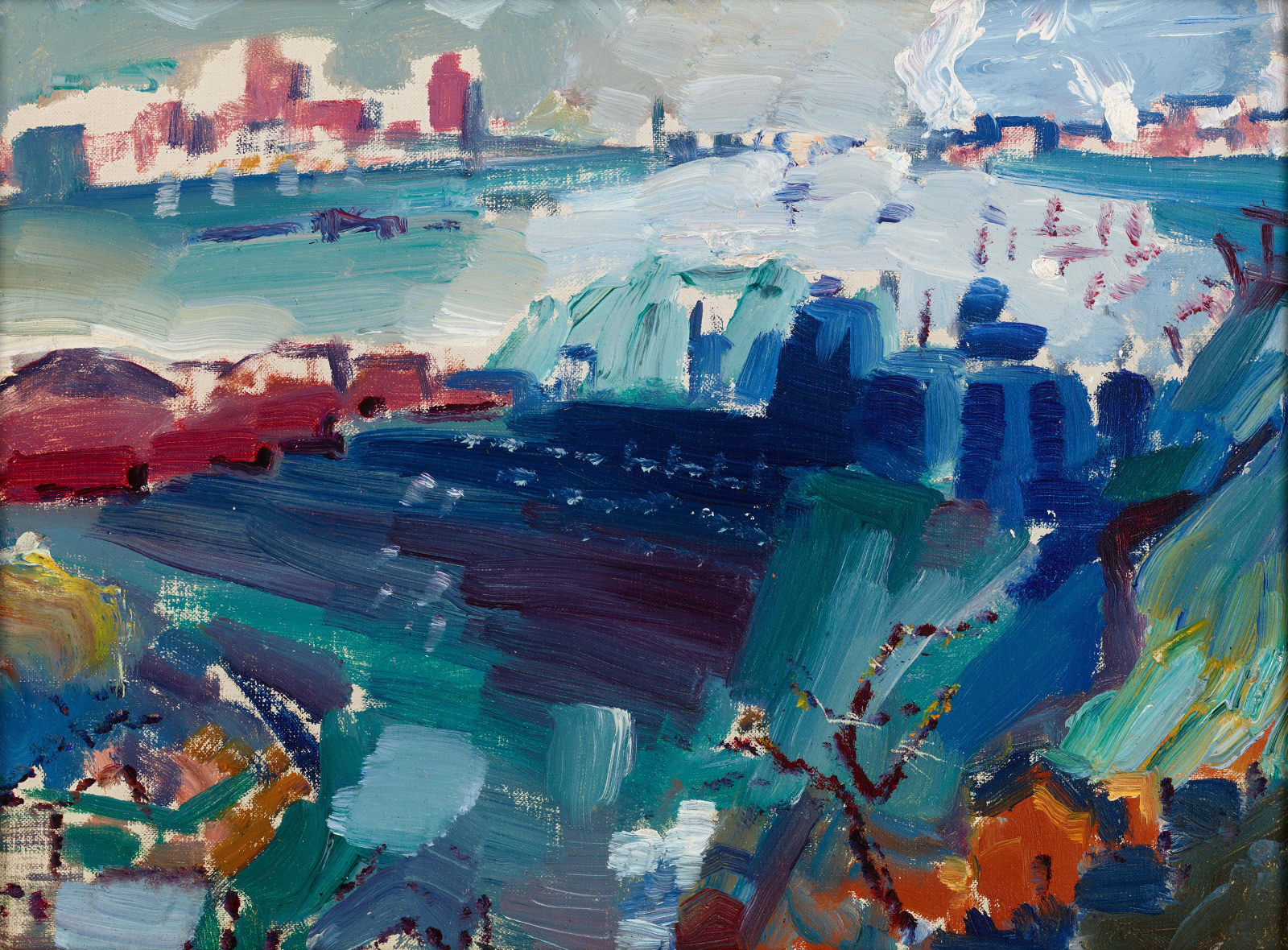John Marin 1870-1953
Framed dimensions: 13 3/8 x 16 1/4 inches
John Marin’s long and prolific career is best marked by his fervent love of painting and abiding belief that art must relate to lived experiences. His best work strikes a delicate balance between abstraction and reality. His commitment to conveying the “realness” of a given subject through an abstract vocabulary of line, shape, color and texture is what defines his artistic singularity. Marin’s work never lost its vigor, even as he returned to the same themes and places over the course of his life. With each return he investigated a subject anew and applied his unflagging creativity and innovation to convey the full force of his experience and imagination.
Marin is one of those unique artists who would have been great whether he had any formal art training or not, as his passion for and commitment to his work was unflagging even as his health failed at the end of his life. His interest in drawing began when he was young, and he initially honed his skill in mechanical drawing at the Stevens Institute of Technology. He then worked as an architectural draftsman and even set up his own firm. Marin abandoned this pursuit by 1897, and by 1899 he had enrolled at the Pennsylvania Academy of the Fine Arts, where he would study until 1901. He probably did not spend a lot of time in class; in fact, he might have taken night courses, which would have allowed him to roam around Philadelphia for countless hours making sketches of the city—an exercise that would be lifelong. In 1900 he was awarded a prize at the Academy for his outdoor sketch.
Marin met Alfred Stieglitz in 1910. The relationship the two men would share until Stieglitz’s death in 1945 was formative for both. Stieglitz exhibited Marin’s work more than other of his artists except for Georgia O’Keeffe. His support of Marin’s career was crucial to the artist’s extraordinary productivity and enormous popularity with critics and collectors alike. The acclaim that Marin received during his lifetime surpassed all his contemporaries.
Marin was a rugged individualist; it informed his life and art. He developed a singular working method and artistic style that he consistently built upon throughout his career. Line was essential to his artistic practice, and drawing was as “natural as breathing.” Marin’s first experiments with abstraction took place in the 1910s, and even as his vocabulary became more abstract, he did not abandon his insistence on the primacy of nature. Unlike many of his peers, Marin never delved into pure abstraction and instead retained some recognizable imagery.
The Weehawkin Sequence, a series of oil paintings on small canvasboards, constitute some of John Marin’s most advanced and adventuresome paintings, and this painting is an exceptional example. The body of work was completed by 1916, making the paintings some of the most abstract and modern works by American artist created before the First World War. In them, The dynamic brushwork of this painting perfectly captures the staccato forms that make up the composition. Marin boldly experiments with form and color in an almost improvisational way. The composition bursts from the canvas, barely contained by its edges. This work is a tour de force of early American modernism that presages the more expressionist abstraction of the 1940s and beyond.
Provenance
Estate of the artist;Meredith Ward Fine Art, New York, 2011;
Private collection, California;
Private collection, California, by descent, 2022 until 2025
Exhibitions
Meredith Ward Fine Art, New York, 2011, John Marin : The Weehawken Sequence, p. 26, pl. 22, illustrated in color.Literature
Mackinley Helm and Frederick S. Wright, John Marin: A Retrospective Exhibition, 1947, p. 15Mackinley Helm, John Marin (1948), p. 9
Sheldon Reich, John Marin: A Stylistic Analysis and Catalogue Raisonne, Volume II (1970), p. 429, no. 16.71, illustrated
Meredith Ward Fine Art, New York, 2011, John Marin : The Weehawken Sequence, p. 26, pl. 22, illustrated in color.
Please join our mailing list
* denotes required fields
We will process the personal data you have supplied in accordance with our privacy policy (available on request). You can unsubscribe or change your preferences at any time by clicking the link in our emails.
